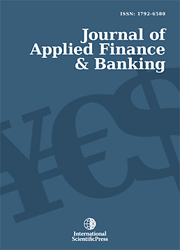Journal of Applied Finance & Banking
The Role of Explainable AI in Enhancing Trust and Decision-Making in Financial Services
-
 [ Download ]
[ Download ]
- Times downloaded: 164
Abstract
The use of AI in the finance sector is rapidly becoming essential to its key operations, including risk management, fraud detection, and investment analysis. This study examined the application of Explainable AI (XAI) to enhance transparency, trust, and informed decision-making in the financial sector. The research employed a mixed-methods approach, as it was appropriate given the quantitative data collected through the Likert survey and the qualitative data collected through academic literature, case studies, and regulatory documents. Quantitative data were analyzed using JASP (independent t-tests, correlation analysis, and regression analysis) and JAMOVI (Exploratory Factor Analysis). The qualitative data were analyzed through taguette in order to determine the themes. The findings of this study indicated that XAI was viewed as a significant tool in the decision-making process, and the level of trust in the finance sector increased. Transparency advances the quality and level of decisions made by finance professionals, which subsequently boosts the trust and quality of the AI systems. The qualitative analysis revealed the themes of the role of XAI in fostering trust, the importance of transparency in enhancing interpretability, and the constraints to XAI application, including the trade-off between complexity and explainability.
Keywords: Explainable Artificial Intelligence (XAI), Interpretability, Regulatory compliance, Transparency, Trust in AI systems, XAI Principles, XAI Techniques.
